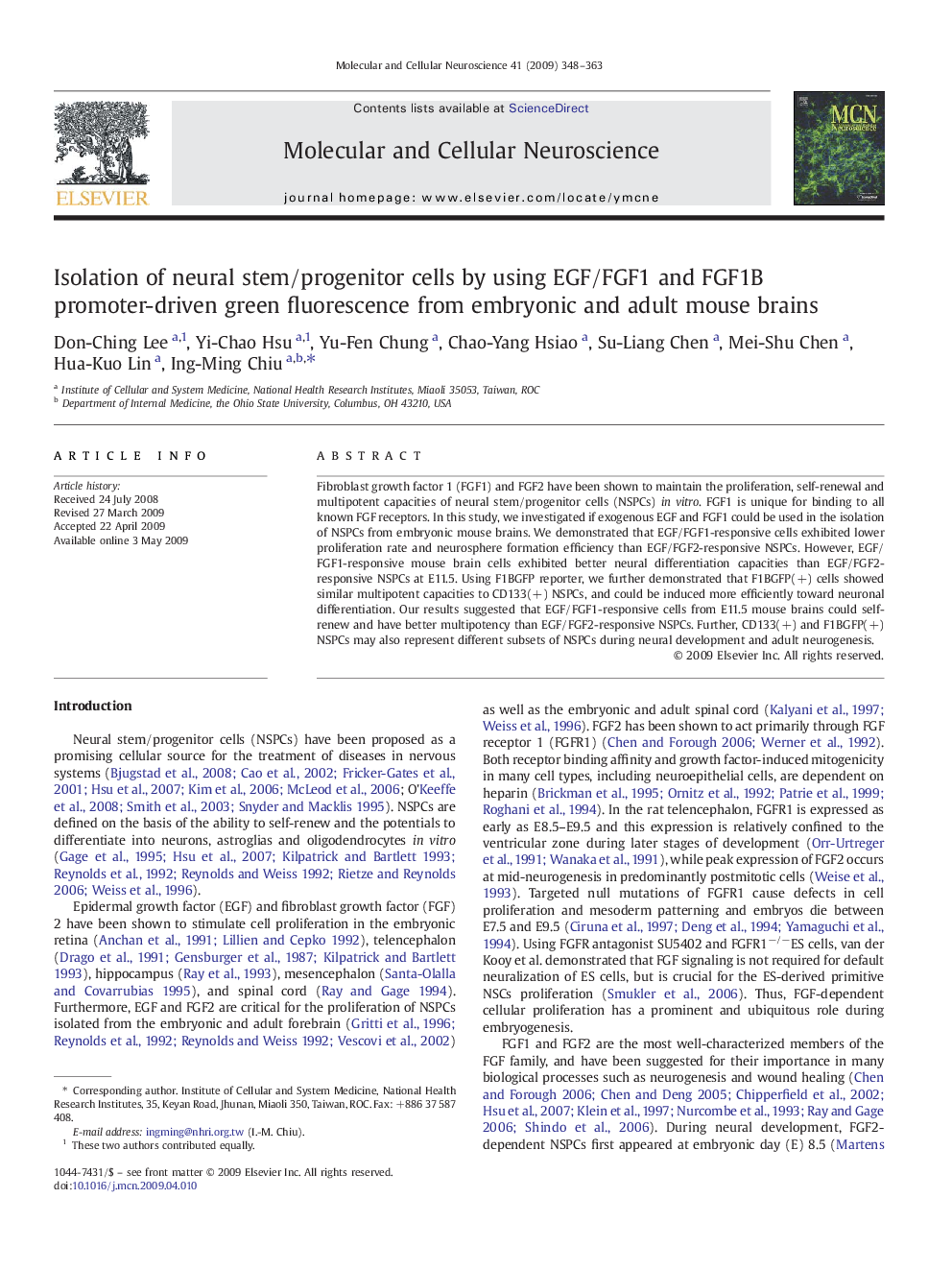| Article ID | Journal | Published Year | Pages | File Type |
|---|---|---|---|---|
| 2198942 | Molecular and Cellular Neuroscience | 2009 | 16 Pages |
Fibroblast growth factor 1 (FGF1) and FGF2 have been shown to maintain the proliferation, self-renewal and multipotent capacities of neural stem/progenitor cells (NSPCs) in vitro. FGF1 is unique for binding to all known FGF receptors. In this study, we investigated if exogenous EGF and FGF1 could be used in the isolation of NSPCs from embryonic mouse brains. We demonstrated that EGF/FGF1-responsive cells exhibited lower proliferation rate and neurosphere formation efficiency than EGF/FGF2-responsive NSPCs. However, EGF/FGF1-responsive mouse brain cells exhibited better neural differentiation capacities than EGF/FGF2-responsive NSPCs at E11.5. Using F1BGFP reporter, we further demonstrated that F1BGFP(+) cells showed similar multipotent capacities to CD133(+) NSPCs, and could be induced more efficiently toward neuronal differentiation. Our results suggested that EGF/FGF1-responsive cells from E11.5 mouse brains could self-renew and have better multipotency than EGF/FGF2-responsive NSPCs. Further, CD133(+) and F1BGFP(+) NSPCs may also represent different subsets of NSPCs during neural development and adult neurogenesis.
